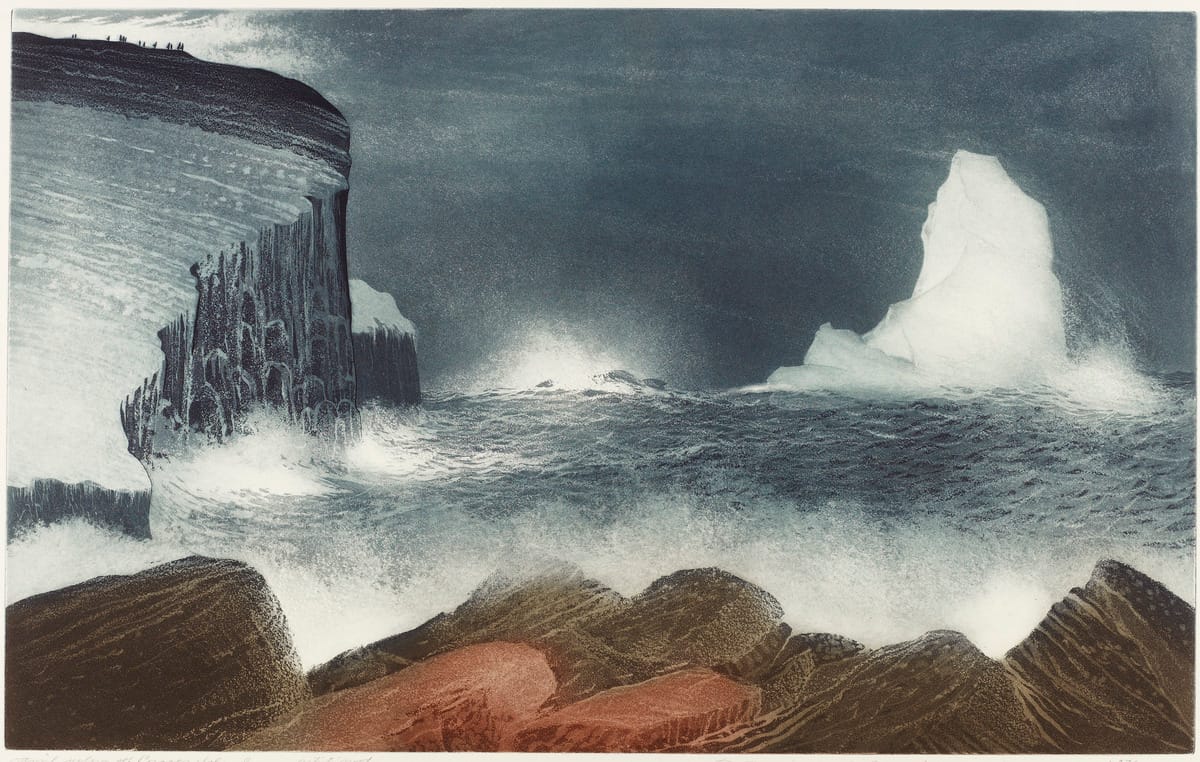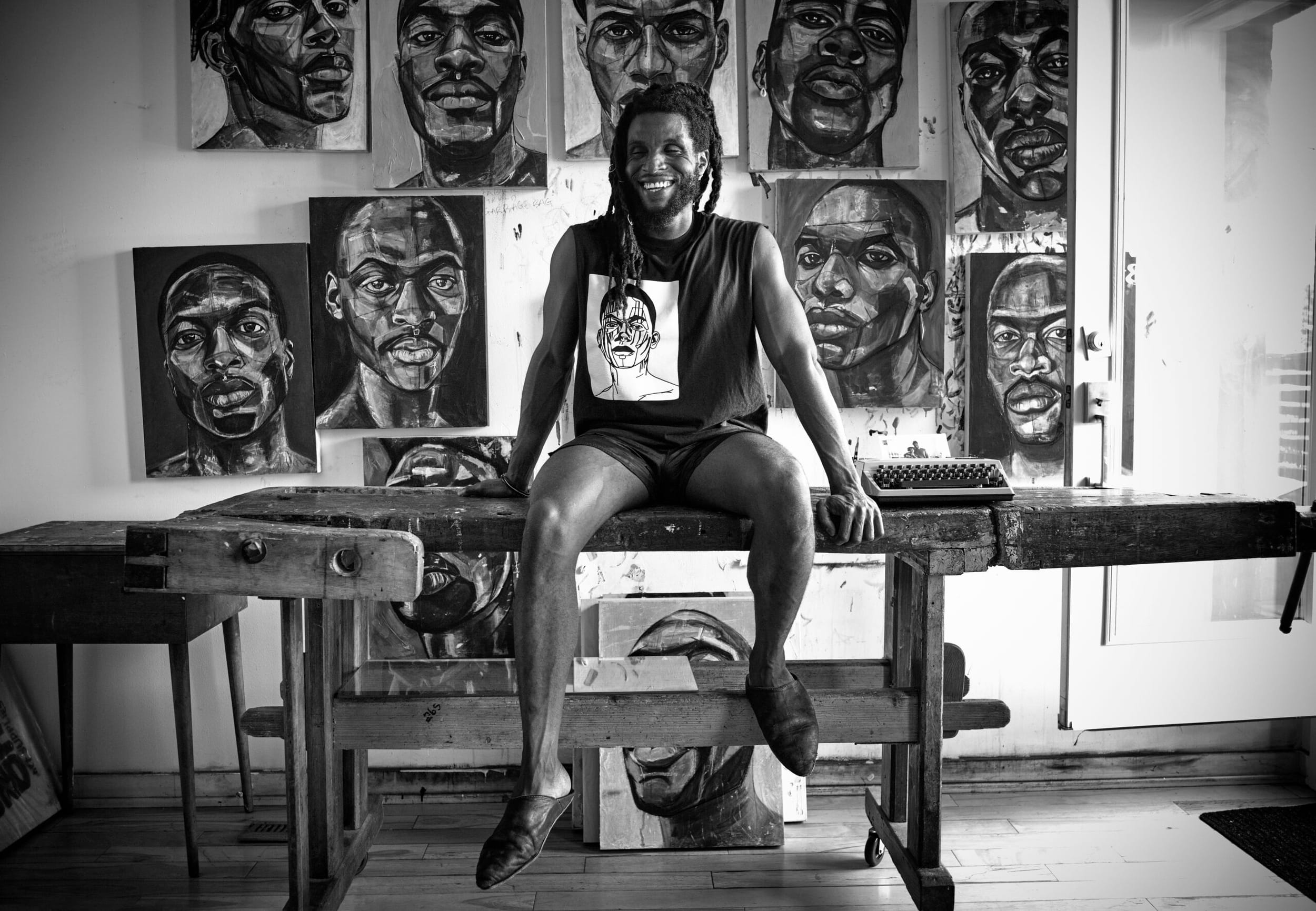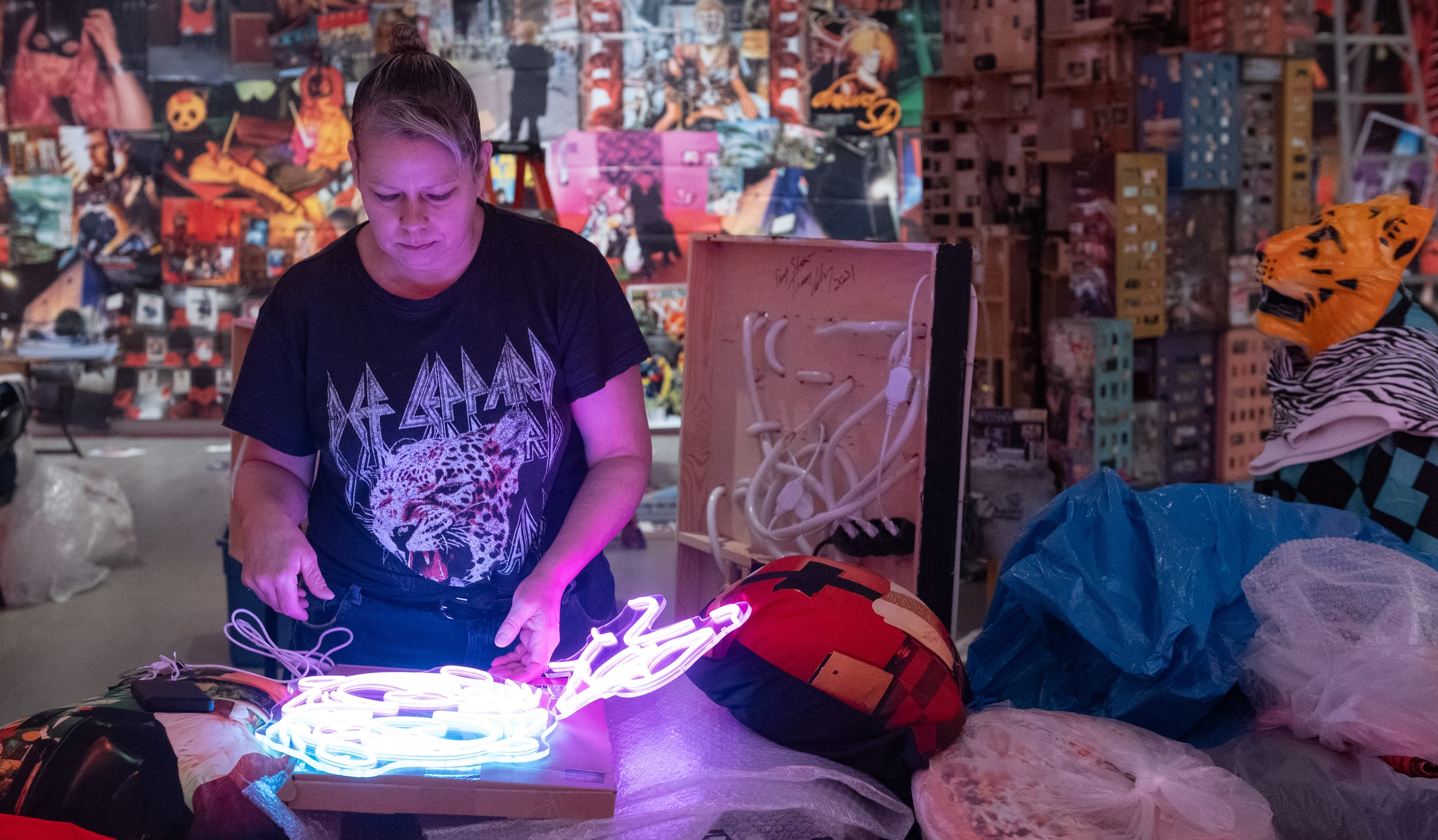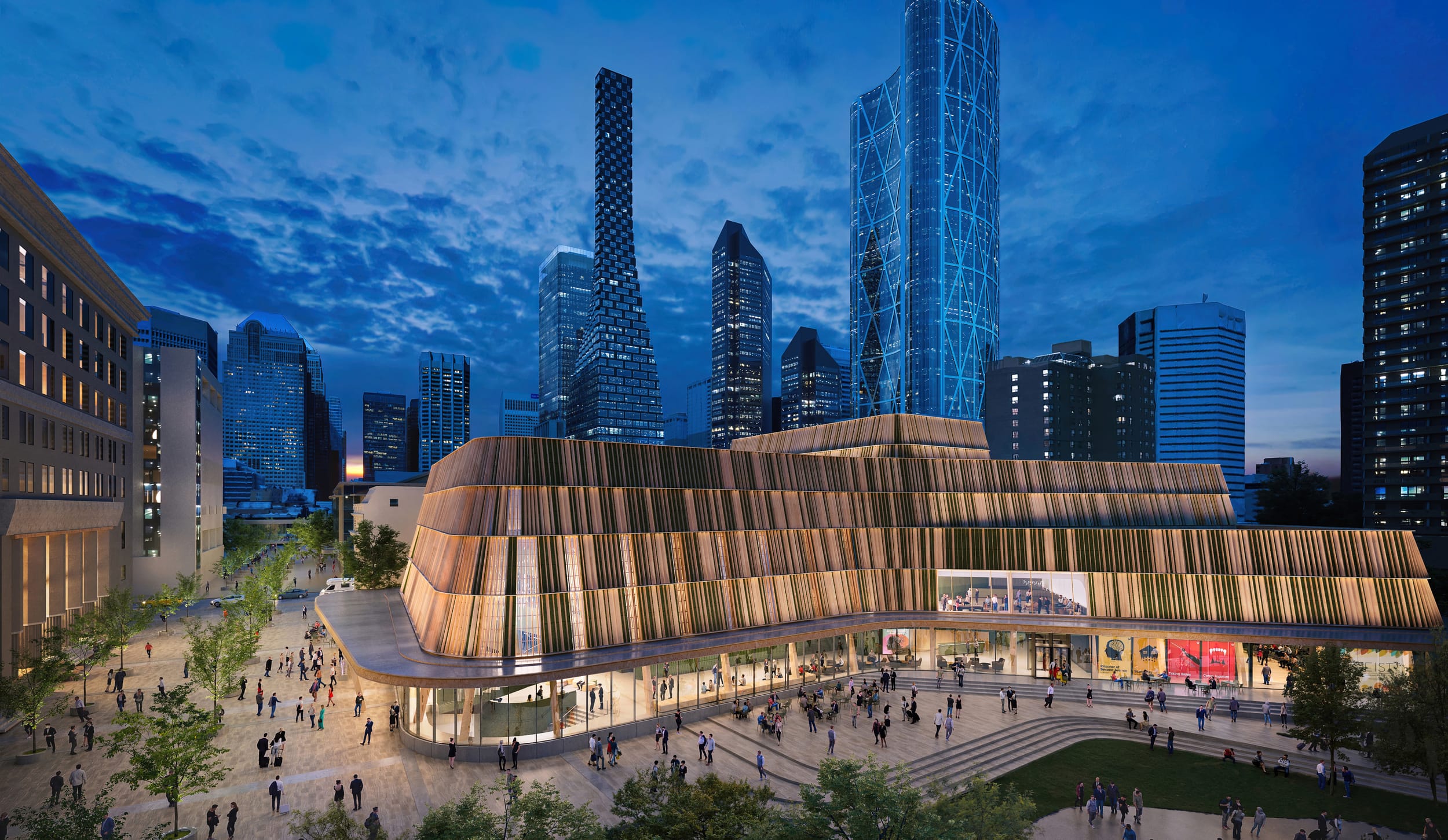A Very Psychogeographic Thing to Do
In conversation with Arcade, writer Shawn Micallef wonders whether Toronto really wants to be a city, and applies the lens of psychogeography to Tracey Snelling’s art.
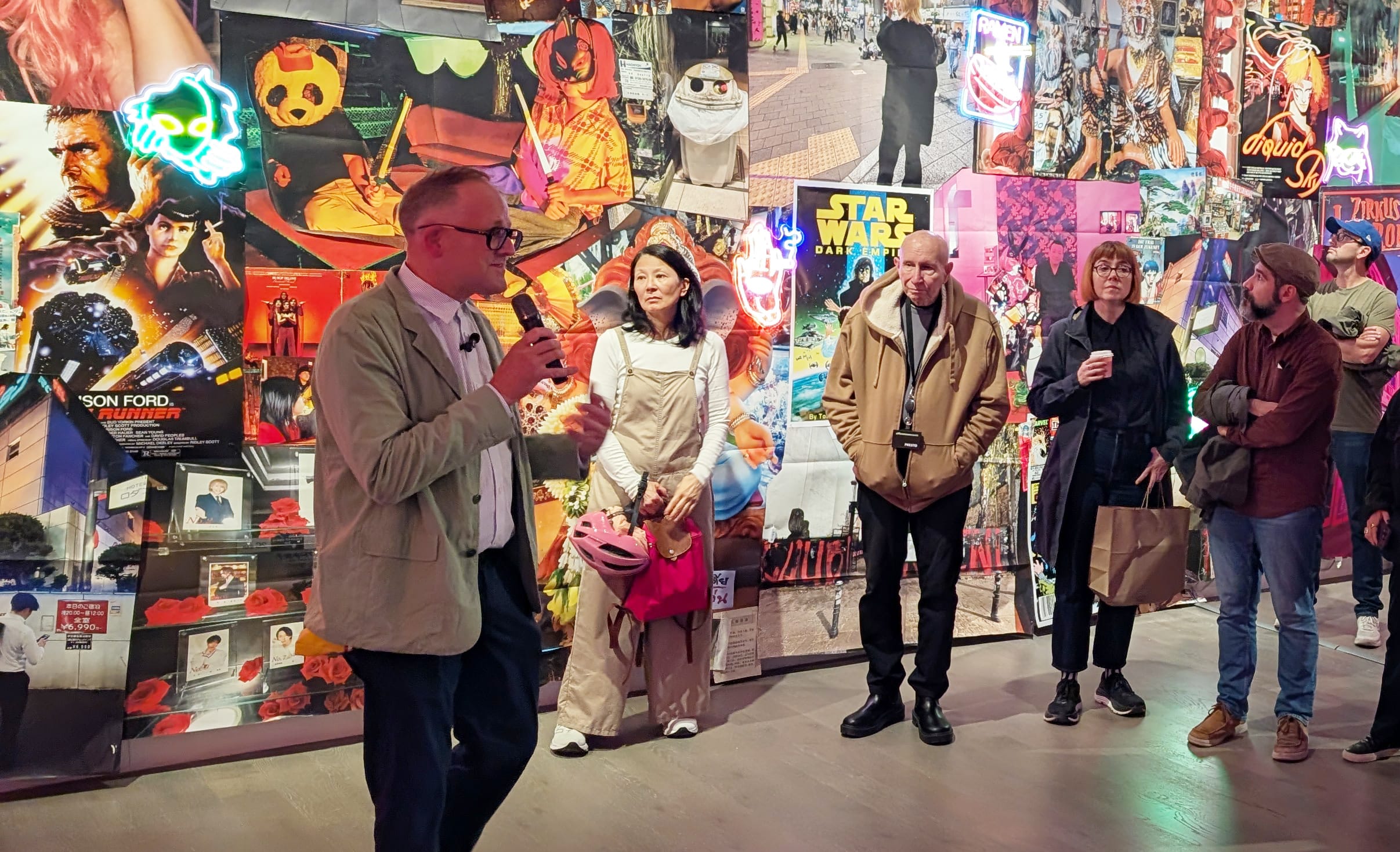
On October 19, Koffler Arts hosted writer, urbanist, and cultural critic Shawn Micallef for a gallery talk and neighbourhood tour in connection with Tracey Snelling’s exhibition, Intergalactic Planetary. One of Canada’s most engaging thinkers on the social and spatial dynamics of cities, Micallef’s writing blends journalistic observation with a flâneur’s curiosity, and like Snelling, he’s fascinated with the hidden histories and textures of our urban spaces.
Micallef is a senior editor and co-founder of Spacing magazine, and a columnist for the Toronto Star, where he writes about architecture, neighbourhoods, and the everyday politics of city living. Micallef has also teaches at the University of Toronto and was a 2011-2012 Canadian Journalism Fellow at U of T’s Massey College.
Last year, Micallef published an expanded, updated edition of his much beloved 2010 book Stroll: Psychogeographic Walking Tours of Toronto. His previous books include Full Frontal TO: Exploring Toronto’s Architectural Vernacular (2012), The Trouble with Brunch: Work, Class and the Pursuit of Leisure (2014), and Frontier City: Toronto on the Verge of Greatness (2018), all of which reflect his distinctive blend of journalism, cultural analysis, and psychogeography.
On the heels of his gallery talk, Arcade spoke with Micallef about what strolling and psychogeography can tell us about cities, the resonances of Snelling’s art, and whether Toronto is actually comfortable with its city-ness.
One of the first Powerpoint slides you showed in your gallery talk asked, “Does Toronto want to be a city?” What do you mean by that?
I think about the idea of Toronto resisting its city-ness a lot. You see it in politics, whether it’s not allowing low-density apartments in single-family home neighborhoods, and how the city resists even that kind of gentle density, or our complaining about traffic. Yeah, traffic is bad here, but it’s always been bad, and that’s how cities are. Sometimes I think the disdain for Toronto is from people who don’t accept that it’s a city, they want it still to be a small town.
As I was looking at Tracy’s work in the gallery, it’s just so wonderfully exuberant, urban, and embraces all the great things about cities, which is like layers and chaos and things stacked on top of each other—endlessly interesting and fascinating, like an onion that you can keep peeling and never get to the centre of.
One of the first connections that came to mind, when I thought of how your writing relates to what Tracy is doing, was this idea of unexpected narratives hiding in plain sight. And that being one of the great payoffs of living in a big city.
That’s the wonderful thing about a walk in the city—you may know your route, but you don’t really know what you’re gonna get. In Toronto, new buildings go up all the time, so there’s always surprises if you revisit a neighborhood even just a few months apart. Going block by block, not knowing what to expect, it’s never boring. Particularly in the inner suburbs, with all their strip malls, where you get a lot more mom and pop shops, because the overhead is a bit lower, so independent people can open businesses. Walking down an urban block and being surprised or delighted or maybe sometimes horrified—that is what city life is about, right?
That’s the feeling I got looking at Tracy’s work, it was a reminder of why I get so excited walking around cities, whether it’s Toronto or some place I’m visiting. When I first walked into the gallery, it felt like when I’m in a new city for the first few hours, just this overwhelming feeling of, “Oh, I must consume this whole thing.” There’s so much new block by block. And that’s how her work felt.
When you first started writing and thinking about cities, you were inspired by ideas like psychogeography and the flâneur. Are these still useful frameworks for what you do?
When I first started walking around Toronto, I was really just walking around, and then I discovered the psychogeographers and the way they walked around Paris, and the idea of a flâneur. It really helped me understand what I was doing, like one of those great moments where you find a piece of art or music that explains your life to you. They felt sort of obscure at the time, nobody taught this stuff in school. Over the years it’s been interesting to watch those two concepts, especially the flâneur, be embraced by more and more people and have a bit of a renaissance. Of course, the flâneur used to be pretty male dominated, so seeing women and others use it as a tool for observing the city has been interesting.
Rewriting Stroll reminded me that I really like Toronto, how interesting it is, and that sometimes I can get bogged down in the bad, frustrating politics of the place. I was reminded of the joy I felt when first exploring Toronto, and how psychogeography and flâneur-ing around are a great way to understand the spaces we live in.
Hearing this makes me think of how aging shapes the way we are able to experience a city. Responsibilities accumulate, maybe we have families, and it gets harder to enjoy the city like a flâneur, because essentially it’s a kind of idling. And late capitalist technological society or whatever you want to call it doesn’t exactly feel conducive to idling.
I sometimes think I couldn’t have written Stroll now. During the first ten years of my life in Toronto I was mostly underpaid, but I still had time. I had roommates, less overhead, less life overhead, I could spend hours and hours researching some of these pieces that ended up in the book in various libraries around Toronto. I could never spend that amount of time now, I just couldn’t afford it.
The Psychogeography Society was a weekly thing that a bunch of us did, this loose association of friends and acquaintances, people came and went, but we walked every Thursday. People had jobs or they had to wake up in the morning, but we still walked until 10 o’clock at night and sometimes went to a bar after. Now, as we lean into middle age, people have kids and more intense jobs and we don’t walk as much anymore. A few times a year someone will propose something. I don’t think of it as though I’ve stopped walking, because I still walk every day, but that sort of idling was a luxury in a way, though I didn’t think of it as a luxury at the time.
It seems like in recent years you’ve been travelling more, as anyone who follows your Instagram stories will notice—with extended trips to São Paulo, Tokyo, and Hong Kong, among others.
I feel like I’ve had a good run, especially post-pandemic, after being all pent up. Also the precariousness of being able to travel to other places, whether it’s another pandemic that comes along or the effects of climate change. It felt like there was some urgency in going to see new places.
You know, I’m looking out the window of my office at U of T right now at the downtown skyline beyond Queens Park, and it grows and changes every year. If you go to some of these places that have been big cities for a longer time—São Paulo has, what, 24 million people, Tokyo, 40 million? It’s bananas. There were moments of being in Tokyo, standing in what can sometimes seem like a quiet, intimate city, but it has as many people as the entire country of Canada. That blows my mind.
Travelling is fun, and it’s a luxury, but I also think of it as education, and that helps me understand the place I write about every week.
What are you typically feeling when you come back to Toronto?
I’m still not disappointed to come back to Toronto, I’m always happy when I see the CN Tower from the plane. Because as much as we can learn from these other places—and we shouldn’t be provincial in thinking we’re unique in some way—there is something kind of great here. The vibe of the place, sometimes it’s frustrating, but it’s also wonderful going for a long walk through Toronto. Not every city has these streets with interesting retail and commercial activity on them for kilometres and kilometres. You can do that in Toronto, in the old city as well as the inner suburbs, with a few breaks here and there. In a lot of what we might consider great cities, that sort of activity is sometimes clustered in only a few places. And Toronto is big enough now that there is a critical mass of people on the streets.
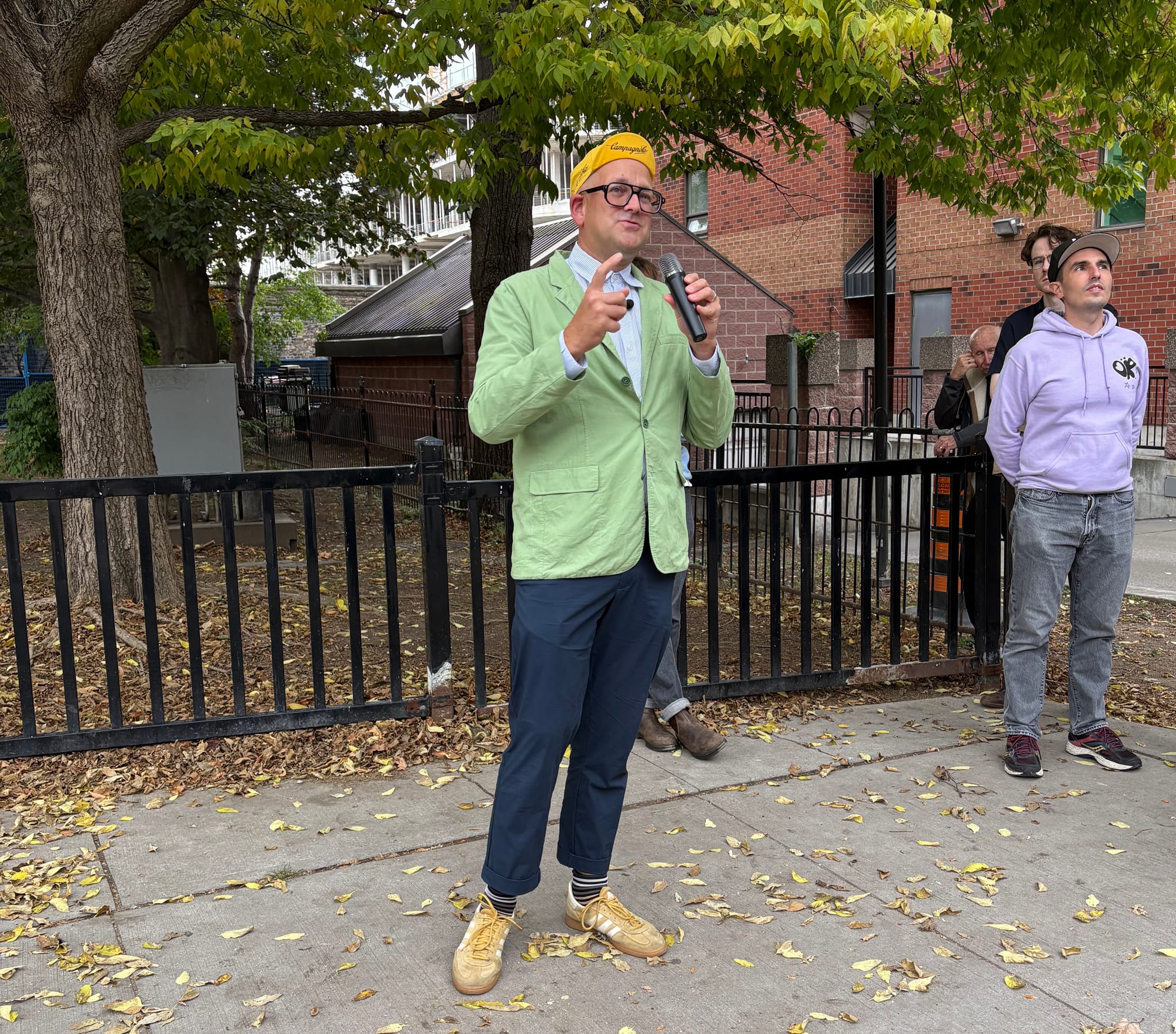
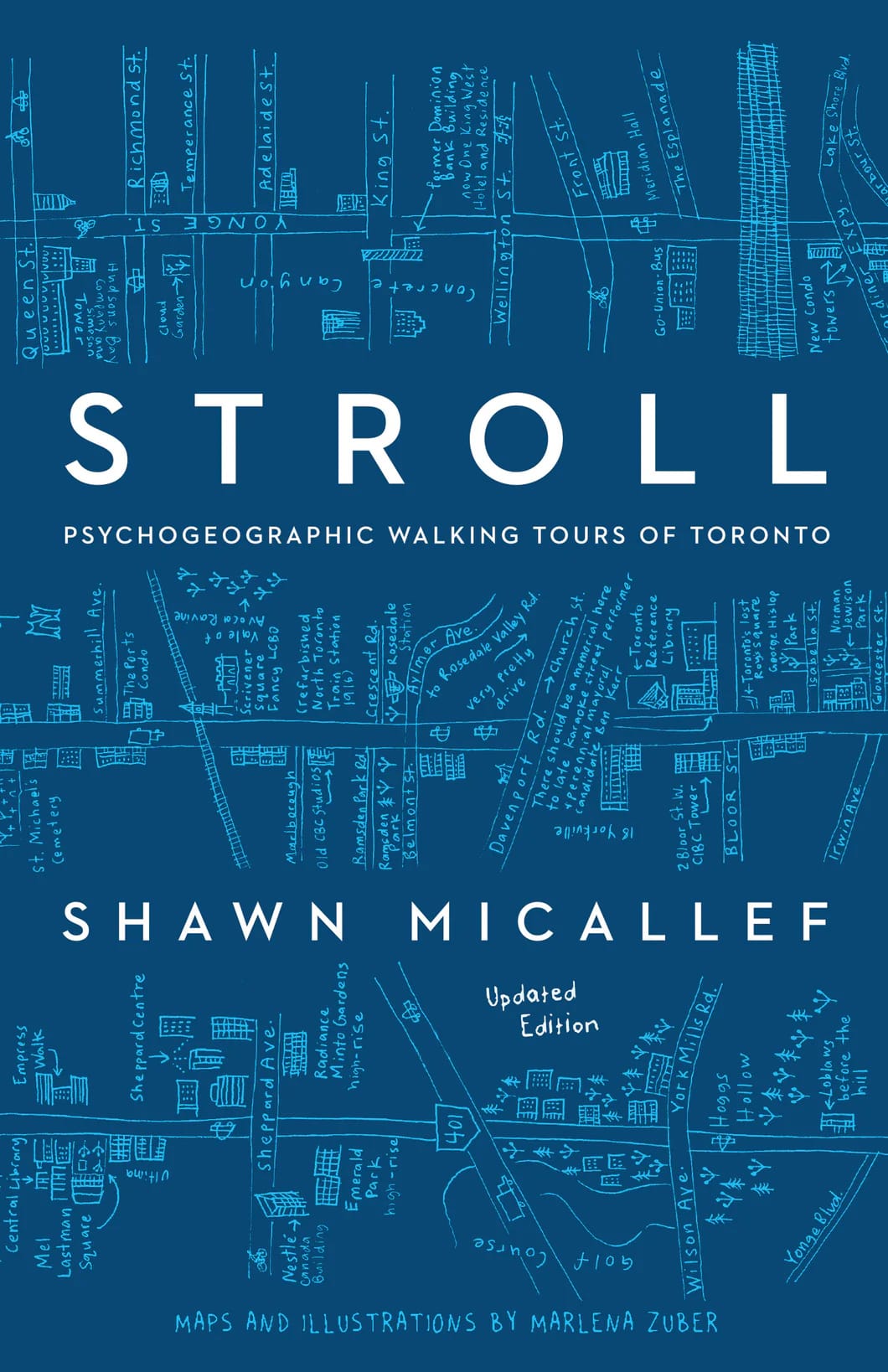
Micallef leading a walking tour in the neighbourhood around Koffler Arts and the cover of his 2024 updated edition of Stroll.
Looking at our challenges with housing and public transit, it can be hard to say that Toronto actually works, like functionally, but it somehow still seems to work at street level, in terms of civility and neighbourliness, even if these too can feel like they’re fraying.
That’s one of the good things about Toronto, and we’ve been able to kind of coast on it for a bit without properly maintaining it or funding it or tinkering with it the way we probably should have. So some of that boasting is maybe coming home to roost, and we need to deal with the consequences. Hopefully, we can turn some of these things around. At the same time, all these big cities have chronic problems. I mean, the traffic is bad in Toronto, but it’s also bad in São Paulo, Tokyo, and Hong Kong.
Were there other ways in which Tracey’s work connected with you?
There’s this handful of cities she’s inspired by or talks about, and then filters them through her imagination. When I did my walking tour in conjunction with her exhibition I tried to plot a sort of back route through the neighbourhood around Koffler—rather than just walking along Queen St. West, we kind of zigzagged around it, trying to see the city from a different angle. Which is a very psychogeographic thing to do, to try to look at a place that’s familiar but from a different angle, so you can learn new things about it, both to appreciate it but also criticize it. It seemed like the way to get towards what she’s built.
In some of her works, like Mexicalichina, she even mashes these different places together.
Which is very Toronto sometimes, this smushing together of different places and time periods. During our walk we were standing at the bottom of Dovercourt, at Sudbury St., which is this intersection of these three different eras of Toronto. There’s the Victorian traces of the CAMH campus and its old wall, then there’s this 1990s townhouse development, and then you have the sort of condo development typical of the 20-teens. It all kind of crashes together in that spot, the different eras, the different ideas about the city—which really kind of embodies Tracey’s work.
Do you foresee a third edition of Stroll, maybe in another 15 years?
I thought the rewriting of Stroll was going to take two months—you know, scratch out one building, add another one in, and maybe change some names, that sort of thing. Instead it took eight months because the change in Toronto has been so profound. It kind of required an entire rewriting of the book. So for now, no, I don’t want to write a third edition, but we’ll see in 15 years. Also, other people can probably write it. In a way they already have, as there is a lot more writing about Toronto now than when I started. And that’s wonderful because other people see so many different things and go so many different places than I would go. Maybe that’s the next Stroll, is that other people write it.
Tracey Snelling’s Intergalactic Planetary runs at Koffler Arts until December 14, 2025.


